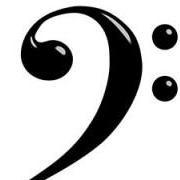Hey everyone!
This composition will be a short prelude to a suite I am writing. But I just can't figure out the right way to intoduce the short melody that begins in measure 9. Originally, I wrote a single whole note under it every measure, but I was not quite satisfied with it. My teacher also said that it's not quite effective that way, and suggested that I write arpeggiated chords (eighth notes), that start out beneath the melody, but at the end of every measure go above it. I tried that, and he thought it was a good solution, but I felt like it takes away the effect of the melody. I like to think of this short motive as a "sigh motive" kind of thing, and I feel like it needs to be introduced in a simple but effective way. I tried everything I could think of, writing a counter-melody, having chords under it, and different kinds of arpeggiated chords. But I always feel that it's either not effective enough, or that the complexity takes away from it's power. The version I am attaching is the latest version I wrote, so far this is the closest I got to what I want, but I still feel like it's not right (the melody in question starts at measure 9). How would you introduce this melody? Does anyone have suggestions? I have already written much longer and more complex pieces than this one, but I just can't get this right. Also note, that this is not the full composition, I only included it until the melody ends, because the second half is still big mess. Any help would be appreciated, and of course if someone has observations about any part of the portion I included, I am happy to hear it.
Thank you,
Vertes
prelude.pdf


